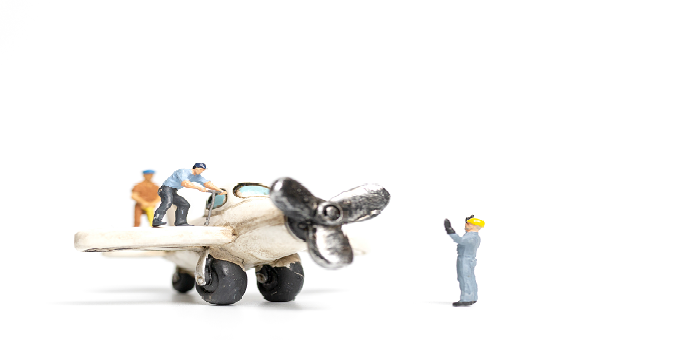Following a number of events related to maintenance check Flights (MCFs) EASA has made a number of changes related to the guidance concerning maintenance check Flights.
Review by Sofema Aviation Services
Ref Annex I to ED Decision 2020/002/R (Amending Annex I to Decision 2015/029/R) – Acceptable Means of Compliance (AMC) and Guidance Material (GM) to Annex I (Part-M) to Commission Regulation (EU) No 1321/2014 Issue 2 -Amendment 3 – See Also Opinion No 01/2017
A number of air accidents/incidents have happened in relation to flights conducted with aircraft that had just undergone incomplete/inadequate maintenance or to flights conducted to verify adequate maintenance of aircraft. Following the Perpignan accident (BEA report on the accident on 27 November 2008 off the coast of Canet-Plage to the Airbus A320-232 registered D-AXLA operated by XL Airways Germany – https://www.bea.aero/docspa/2008/d-la081127.en/pdf/d-la081127.en.pdf).
EASA reviewed the ‘air operations requirements’ and found that the issue of MCFs was not sufficiently addressed by the EU regulations. Therefore, EASA launched this rulemaking activity in consultation with its advisory bodies (ABs).
GM M.A.301(i) Continuing airworthiness tasks (MCFs)
The definition of and operational requirements for MCFs are laid down in the Air Operations Regulation and are carried out under the control and responsibility of the aircraft operator.
During the flight preparation, the flight and the post-flight activities as well as for the aircraft handover, the processes requiring the involvement of the maintenance organisations or their personnel should be agreed in advance with the operator.
The operator should consult as necessary with the CAMO in charge of the airworthiness of the aircraft.
Depending on the aircraft defect and the status of the maintenance activity performed before the flight, different scenarios are possible and are described below:
(1) The aircraft maintenance manual (AMM), or any other maintenance data issued by the design approval holder, requires that an MCF be performed before completion of the maintenance ordered.
In this scenario, a certificate after incomplete maintenance, when in compliance with M.A.801(f) or 145.A.50(e), should be issued by the maintenance organisation, and the aircraft can be flown for this purpose under its airworthiness certificate.
Note – Due to incomplete maintenance, for aircraft used in commercial air transport, it is advisable to open a new entry on the aircraft technical log system to identify the need for an MCF.
This new entry should contain or refer to, as necessary, data relevant to perform the MCF, such as aircraft limitations and any potential effect on operational and emergency equipment due to incomplete maintenance, maintenance data reference and maintenance actions to be performed after the flight.
After a successful MCF, the maintenance records should be completed, the remaining maintenance actions finalized and the aircraft released to service in accordance with the maintenance organisation’s approved procedures.
(2) Based on its own experience and for reliability considerations and/or quality assurance, an operator or CAMO may wish to perform an MCF after the aircraft has undergone certain maintenance while maintenance data does not call for such a flight.
Therefore, after the maintenance has been properly carried out, a certificate of release to service is issued and the aircraft airworthiness certificate remains valid for this flight.
(3) After the troubleshooting of a system on the ground, an MCF is proposed by the maintenance organisation as confirmation that the solution applied has restored the normal system operation.
During the maintenance performed, the maintenance instructions are followed for the complete restoration of the system and therefore a certificate of release to service is issued before the flight.
The airworthiness certificate is valid for the flight. An open entry requesting this flight may be recorded in the aircraft technical log.
(4) An aircraft system has been found to fail, the dispatch of the aircraft is not possible in accordance with the maintenance data, and the satisfactory diagnosis of the cause of the fault can only be made in flight.
The process for this troubleshooting is not described in the maintenance data and therefore scenario (1) does not apply. Since the aircraft cannot fly under its airworthiness certificate because it has not been released to service after maintenance, a permit to fly issued in accordance with Regulation (EU) No 748/2012 is required.
After the flight and the corresponding maintenance work, the aircraft can be released to service and continue to operate under its original certificate of airworthiness.
For certain MCFs the data obtained or verified in flight will be necessary for assessment or consideration after the flight by the maintenance organisation prior to issuing the maintenance release.
For this purpose, when the personnel of the maintenance organisation cannot perform these functions in flight, the maintenance organisation may rely on the crew performing the flight to complete this data or to make statements about in-flight verifications.
In this case, the maintenance organisation should appoint the crew personnel to play such a role on their behalf and, before the flight, brief appointed crew personnel on the scope, functions and the detailed process to be followed, including required reporting information after the flight and reporting means, in support of the final release to service to be issued by the certifying staff.
Next Steps
Sofema Aviation Services www.sassofia.com and SofemaOnline www.sofemaonline.com – Provide Classroom, Webinar & Online Regulatory & Vocational Training.
For further details please email office@sassofia.com and online@sassofia.com




